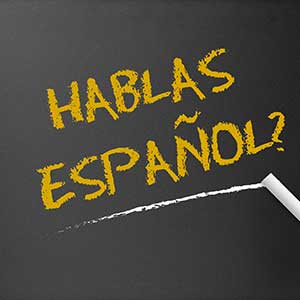Your cart is currently empty!
AP Computer Science Principles
Grade:
9 – 12
Duration:
2 Semesters
Prerequisites:
None
Materials:
Yes, see link below!
Our Advanced Placement courses are not available for purchase at this time. They will re-open for enrollment in the 2026-2027 school year around July 2026.
This AP Computer Science Principles (CSP) class uses the CompuScholar Computer Science Foundations[1] curriculum as the primary resource. It is taught as a one-year (two-semester) sequence and covers all required topics in the “Computer Science Principles” Course Description published by the College Board.
This AP Computer Science Principles (CSP) class uses the CompuScholar Computer Science Foundations[1] curriculum as the primary resource. It is taught as a one-year (two-semester) sequence and covers all required topics in the “Computer Science Principles” course description published by the College Board. The Python language is taught as the basis for programming topics.
Students need to have typical computer usage skills prior to starting this course. Other introductory programming courses are not required. All required concepts are taught from the ground up in a fun, step-by-step manner. The course includes uses a variety of multimedia content such as full-color, interactive text, narrated instructional videos, and guided exercises. Strong emphasis is placed on hands-on programming labs to demonstrate mastery of lesson concepts.
This course is fully aligned with the AP Computer Science Principles Course and Exam Description. This allows teachers to easily leverage the additional material and practice questions in the AP Classroom.
Chapters 1 – 22 should be completed in sequence and cover all required topics on the AP CSP exam, plus certain other highly recommended software skills. These chapters include substantial, hands-on lab work and guidance on the CSP “performance task” and exam preparation.
Typical classes will finish all required AP CSP content prior to the exam administration in May. We recommend using the remaining time before the exam to review the College Board’s published practice exams and any other external source of practice problems. Students should also be given sufficient time to complete the performance task.
Chapters 23 – 29 contain optional topics that are not required for AP CSP. Teachers may review and select any of these optional topics for students as time permits after the AP CSP exam.
Supplemental Chapters contain a variety of enrichment topics that may be required by individual states to satisfy requirements for other coding or digital literacy courses.
Semester A Outline:
Chapter 1: Computing Concepts
Chapter 2: Networking
Chapter 3: Fundamentals of Python
Chapter 4: Working with Data
Chapter 5: Input and Output
Chapter 6: Making Decisions
Chapter 7: Finding and Fixing Problems
Chapter 8: Loops
Chapter 9: Lists
Chapter 10: Math Concepts
Chapter 11: Working with Strings
Chapter 12: Creating Functions
Chapter 13: Mid-Term Project
Semester B Outline:
Chapter 14: Collaborative Design and Development
Chapter 15: Designing Algorithms
Chapter 16: Real-World Algorithms
Chapter 17: Understanding Data
Chapter 18: Impact of Computing
Chapter 19: Legal and Ethical Concerns
Chapter 20: Cybersecurity
Chapter 21: Preparing for the CSP Exam
Chapter 22: CSP Performance Task
Chapter 23: Creating Web Pages
Chapter 24: Web Page Design
Chapter 25: Links, Images and Animation
Chapter 26: Operating Systems
Chapter 27: Computer Files
Chapter 28: Search Engines
Chapter 29: Computer Careers
This course uses the following electronic textbook: [1] Computer Science Foundations online text, by CompuScholar, Inc. 2022, ISBN 978-1-946113-02-3.
This course uses an in-browser Python coding environment. This online feature may be used by students to complete all exercises and activities in all required AP chapters.
What TO EXPECT
See what our program is like after you get enrolled for parents and students.
Full-Time ProgramS
Our full time online tuition programs include enrollment for the school year (i.e. two semesters). Tuition varies based on our different programs. We recommend that students wishing to take 4 or more individual classes apply to our Full-Time Tuition Programs.
Highly Qualified Teachers 24/7 Access to Learning Platform Optional Weekly Group Synchronous Sessions And More!








